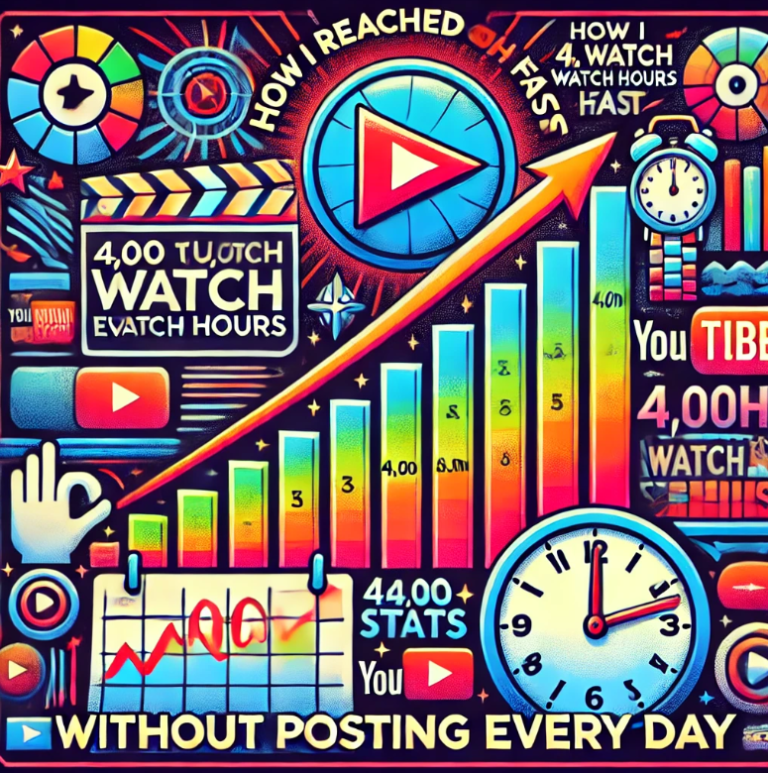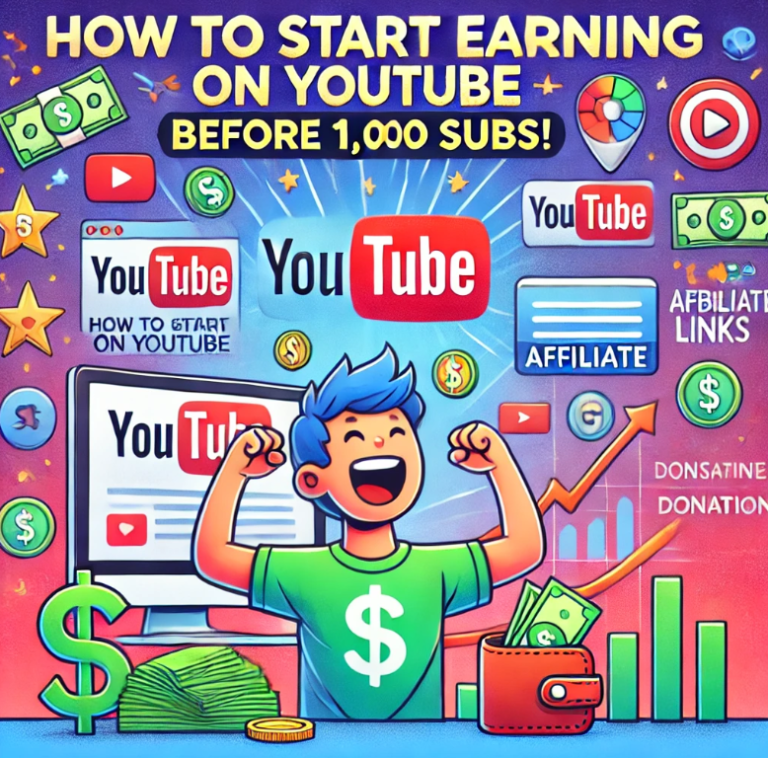The Synergy Between Blogging and YouTube

If you’re working hard on your YouTube channel, you might be wondering how you can accelerate your path to monetization. One powerful strategy is to start a blog that complements your YouTube content. Combining a blog with your YouTube channel isn’t just about expanding your content reach; it can also speed up the process of getting monetized on YouTube. Let’s dive into why starting a blog is a game-changer and how it can help you earn money faster.
Boost Your Income with Google AdSense
How Google AdSense Enhances Your Blog
Google AdSense is a straightforward way to start earning from your blog. After signing up, you can place ads on your blog, which will generate revenue based on views or clicks. This means you can begin earning money from your blog while you’re still working toward YouTube monetization.
Speed Up Your Path to YouTube Monetization
Here’s how having a blog with AdSense can help you get into the YouTube Partner Program (YPP) faster. The process of getting approved for Google AdSense can be time-consuming, and having an active AdSense account linked to your blog can help you navigate this process more smoothly. By already having a Google AdSense account active on your blog, you’re reducing the waiting time for approval when you apply for YPP. Essentially, you’re setting yourself up to meet the monetization requirements more efficiently.
Why Adding a Blog to Your YouTube Strategy Makes Sense
1. Diversify Your Content
A blog provides a new platform to create content that complements your YouTube videos. You can write detailed guides, how-to articles, and in-depth reviews that provide more value than what might fit into a video. This not only helps you reach a wider audience but also strengthens your authority in your niche.
2. Improve Your SEO and Drive Traffic
Blogs are excellent for boosting your search engine optimization (SEO). By creating blog posts about topics related to your YouTube content, you can attract organic traffic from search engines. For example, if your YouTube video covers a specific tech gadget, you can write a blog post with a comprehensive review and tips. This approach drives traffic to both your blog and YouTube channel, enhancing your overall visibility.
3. Strengthen Your Audience Connection
Blogs offer a different way to engage with your audience. Through in-depth posts and detailed content, you can provide more value and build a stronger connection with your readers. This deeper engagement can translate into more loyal viewers and readers who are more likely to follow you across platforms.
4. Explore Additional Revenue Streams
Beyond YouTube ads, a blog opens up additional revenue opportunities. You can monetize through sponsored posts, affiliate marketing, and selling digital products. This diversification provides a more stable income stream and reduces reliance on YouTube ad revenue alone.
Getting Started with Blogging for Your YouTube Channel
1. Choose a Blogging Platform
To start your blog, you’ll need to choose a platform. WordPress and Blogger are two popular options. WordPress offers more customization and professional features, while Blogger is more straightforward and integrates well with Google’s services.
2. Set Up Your Blog
Once you’ve chosen your platform, you’ll need to set up your blog. This includes selecting a domain name, picking a theme, and configuring essential plugins or widgets. Make sure your blog’s design aligns with your YouTube channel’s branding for a cohesive look.
3. Create Valuable Content
Focus on creating high-quality content that complements your YouTube videos. Write posts that offer additional information, tips, or insights related to your video topics. For instance, if your YouTube video is about home organization tips, your blog could feature a detailed guide or printable checklists.
4. Promote Your Blog and YouTube Channel
Promote your blog on your YouTube channel and vice versa. Mention your blog in your videos and include links in your video descriptions. On your blog, embed your YouTube videos to drive traffic back to your channel. Cross-promotion helps increase visibility and engagement on both platforms.
5. Track and Optimize Performance
Use tools like Google Analytics to monitor your blog’s performance. Pay attention to metrics such as page views, bounce rates, and ad click-through rates. Use this data to optimize your content strategy and improve your overall approach.
How a Blog Can Accelerate Your YouTube Monetization
Starting a blog and using Google AdSense effectively reduces the time it takes to get approved for YPP. Since Google AdSense is connected to YouTube’s monetization process, having an active AdSense account on your blog shows that you’re already engaged in earning revenue through Google’s platforms. This setup can make it smoother and quicker for you to get approved for YPP.
Conclusion
Starting a blog to complement your YouTube channel is a smart strategy that offers multiple benefits. From diversifying your income streams to improving SEO and driving more traffic, a blog can enhance your overall content strategy. Plus, by using Google AdSense on your blog, you can help speed up the process of getting approved for YouTube’s Partner Program.
So, if you haven’t started a blog yet, now’s the time to get going. It’s an investment that can help you unlock massive earnings and reach your YouTube monetization goals faster.


